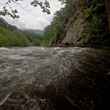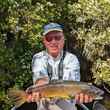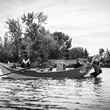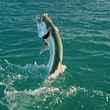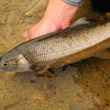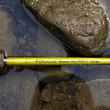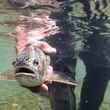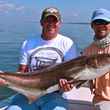Articulated streamers designed to imitate large meals are all the rage lately especially with the crowd that likes large fish. I suppose that includes most of us, though once you try casting those beasts you might reconsider. That is, until a large trout slams the thing, then it's all worthwhile.
The reality is that most of us spend a lot of time casting more modest flies to trout of the more common variety. This time of year the game gets smaller and smaller as we move into midge and olive season. A buddy recently wrote me about a pending fishing trip. The advice was that we'd start at size #18 flies and work our way down until we found the sweet spot probably around #22 or less.
Since we're only seeing small flies hatching, it's not a big leap to assume that's all that's in the water column. And while it might be true that these smaller bugs are the majority of the fauna all those bugs that hatch in warmer months have to be live somewhere off peak. It's no surprise that they're living underfoot.





